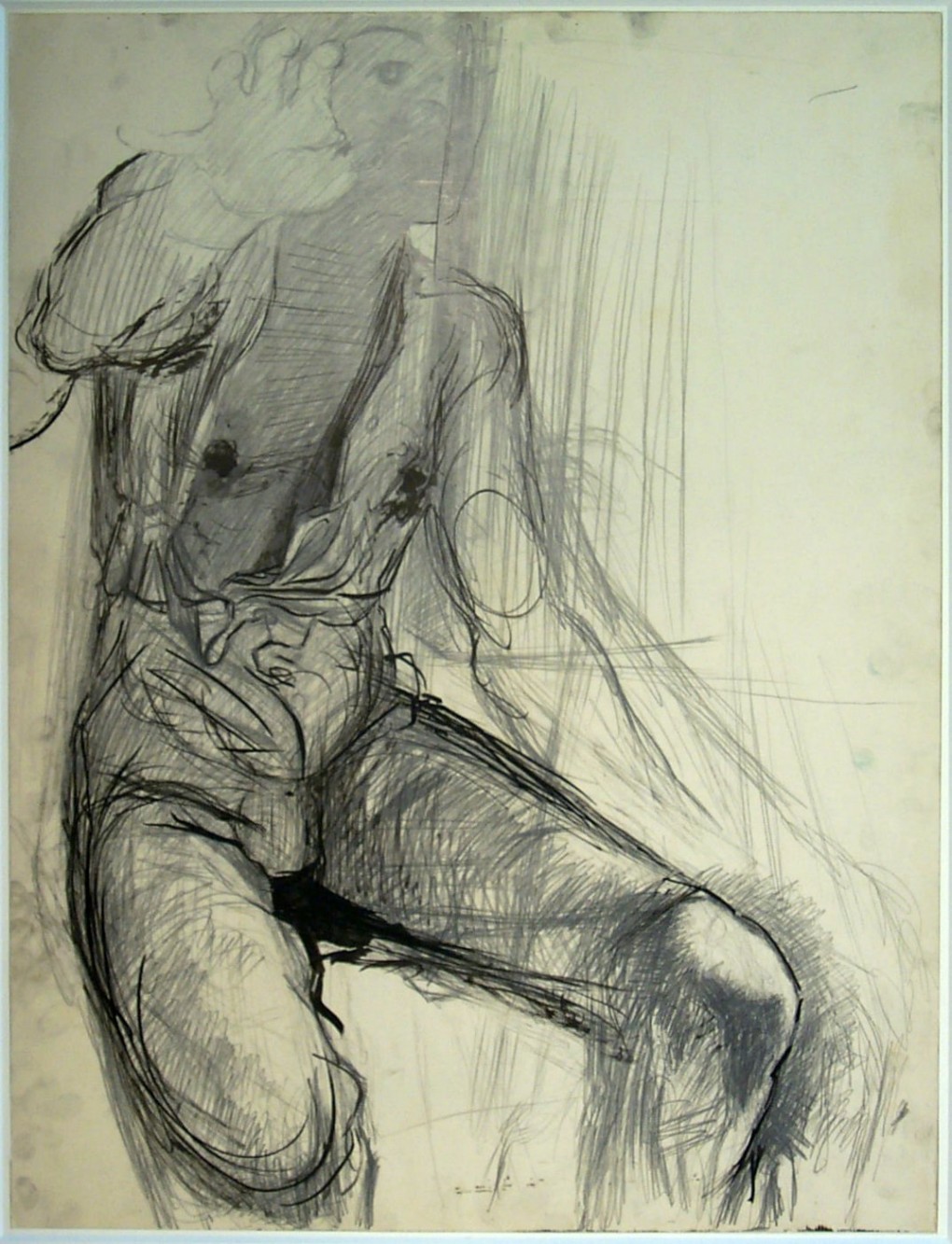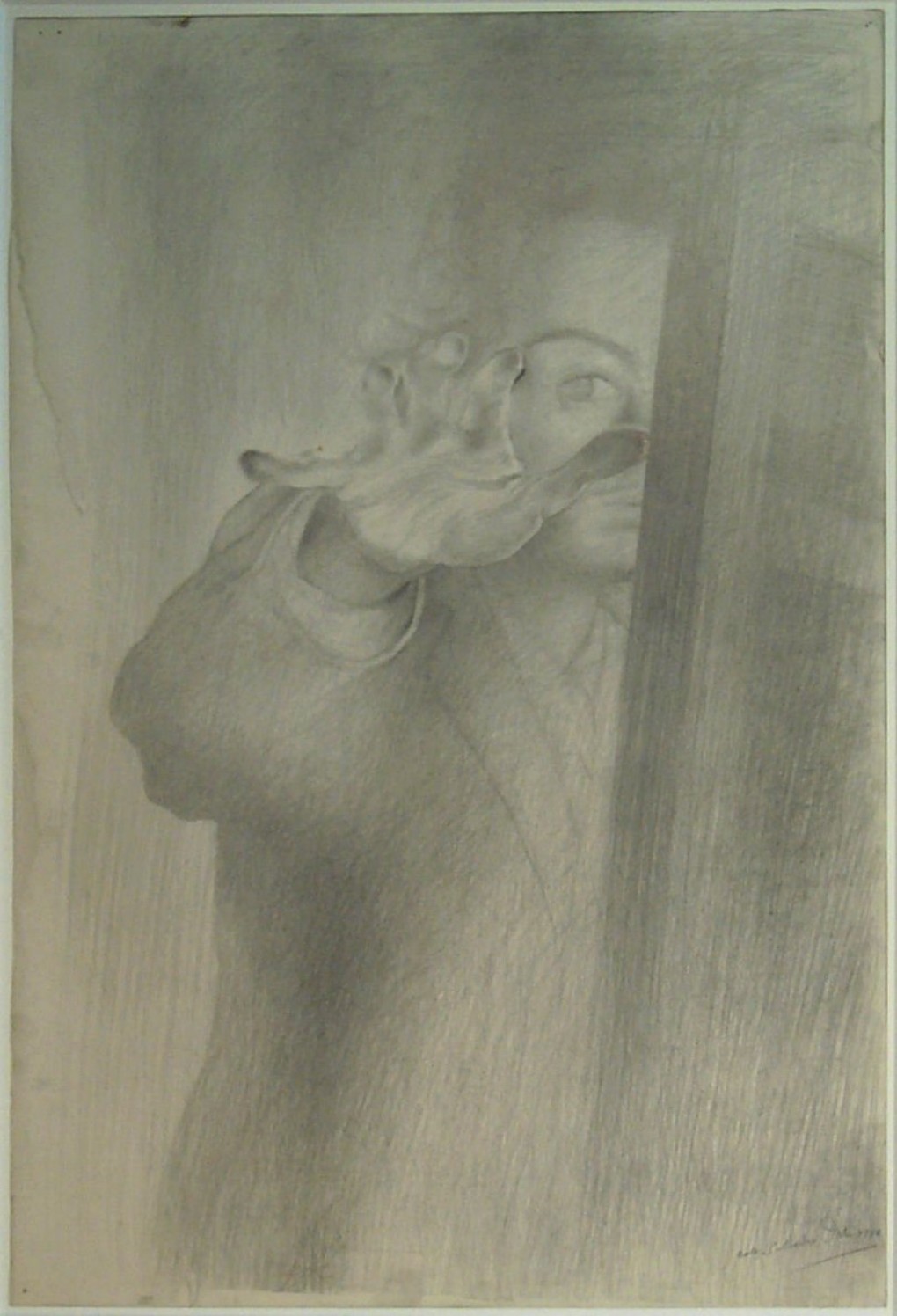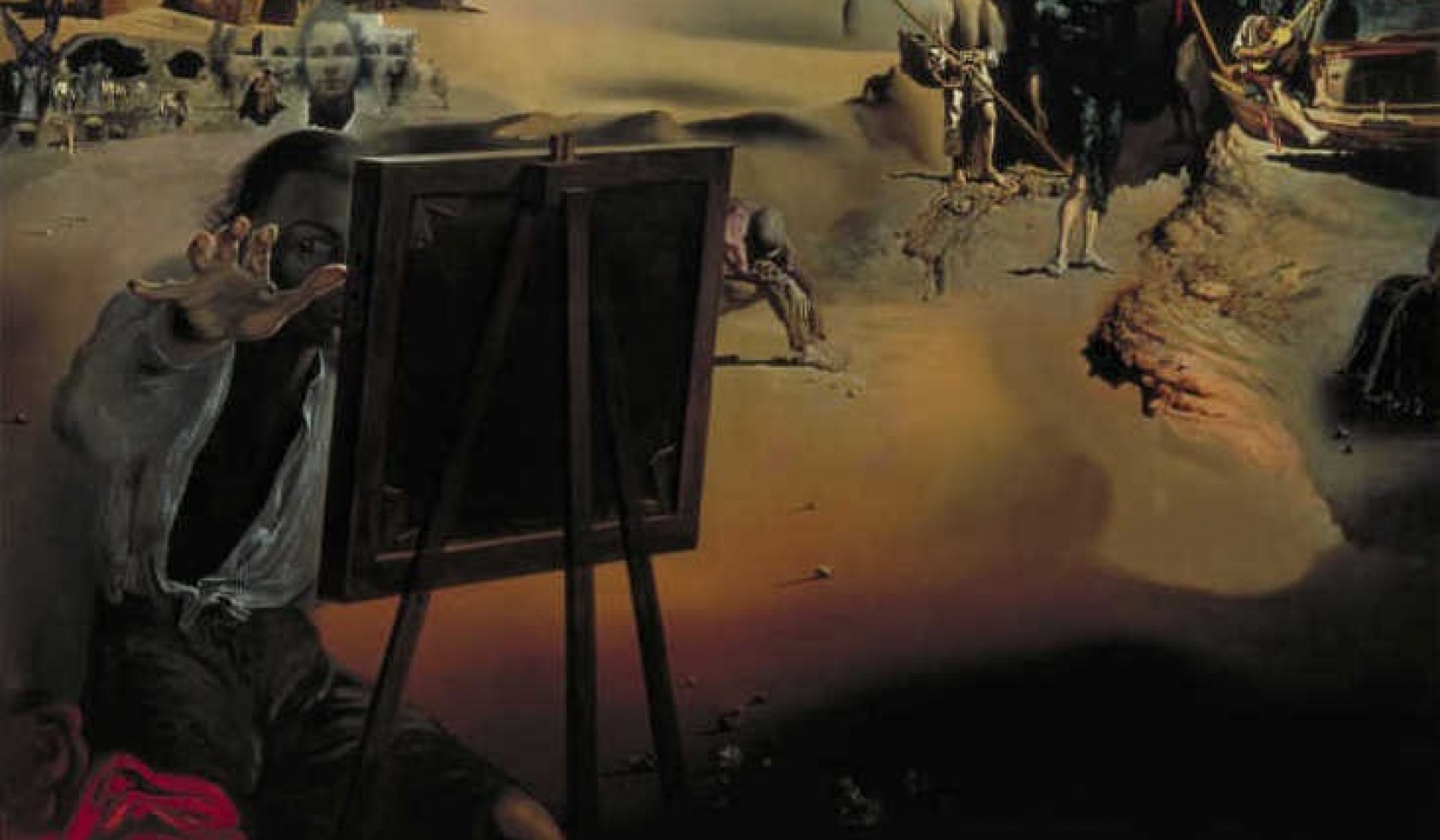Did you know
That one of the first books about painting was written by Cennino Cennini in the fifteenth century? The original title of the famous book is ‘Il libro dell’arte’. The English title is ‘The Artist’s Handbook’

Donors, friends and guests with a privilege pass may book a single or multiple time slots here
Donors, friends and guests with a privilege pass may book a single or multiple time slots here
Would you also like to experience more Boijmans or give a friendship as a gift? Join as a Friend and get invited for the annual Museumpark Vriendendag. Will we see you or your friend in the depot soon?

The paint on the canvas is very important in identifying the period when a painting was made and attributing it to an artist.
Paint is always made up of a pigment and a medium. The medium, also called the vehicle or binding agent, largely determines how the paint looks. Oil, egg tempera, gum and glue are examples of media. These media all have their own characteristic properties.
That one of the first books about painting was written by Cennino Cennini in the fifteenth century? The original title of the famous book is ‘Il libro dell’arte’. The English title is ‘The Artist’s Handbook’
In the 15th and 16th centuries, painters’ studios were real workshops where pupils were trained. Students who were sometimes as young as ten were apprenticed to established painters. To begin with they learned to draw, then they spent years studying all aspects of painting. Until the 19th century it was customary for aspiring painters to train in the techniques of painting in workshops.
Peter Paul Rubens was a painter in the Low Countries with a large workshop. His workshop produced a variety of successful painters, who in turn would later run their own workshops. Anthony van Dyck and Jacob Jordaens worked in his workshop.
There are some important painter’s attributes in this painting: the easel, palette and brushes. The artist, Jan Linse (1875-1930), is working in the studio he shared with Alexander Henri Robert van Maasdijk (1856-1931), who painted this picture.
A painting’s support is the base on which it is painted. It can be made from different materials. The support an artist chooses often depends on what the painting is for. Clients sometimes choose the support themselves for this reason.
There are a number of different possibilities, including panel, canvas, metal sheet, paper and plaster.


Panels were the usual support for paintings until the 16th century. A wooden panel provides a firm, smooth and even base for a painting, allowing the painter to work precisely and in detail. Large panels were extremely heavy and made from a number of boards, so it was important for them to be well made. If the joinery was poor, there was a real risk that the boards would move and the joints in the painting would open.
A ground layer had to be applied to the wood before it could be painted, as wood is too rough and absorbs a lot of paint.
'The Three Marys at the Tomb' is, like 'The Tower of Babel', an example of oil painting on panel.

Jan van Eyck, The Three Marys at the Tomb, 1425-35, oil on panel, acquired with the collection of D.G. van Beuningen, 1958
A canvas is never stretched completely tight: it moves with the movement of the brush. Canvas was the support most often used for paintings in Italy in the 16th century but it did not become popular in the Low Countries until the 17th. Canvas has a great advantage over panel in that it is easy to transport because it is light and can be rolled up when it is removed from the stretcher.
Like panels, canvases are absorbent, so they have to be prepared with a ground layer.
The material most often used for canvases is linen. Cotton canvases came on to the market in the 19th century. Artists could only use a canvas if it was stretched tightly on a frame known as a stretcher or strainer. From the 18th century onwards, painters could buy stretchers that they could tighten themselves.
'Still Life with Potatoes' is one of the many pictures by Vincent van Gogh that are painted on canvas.


Metal plate
Like panels, metal plates have smooth, hard surfaces. The most widely used are copper. Metal plates were popular supports throughout Europe in the 17th century.
Metal plates are roughened and sometimes rubbed with garlic for use as supports to paint on. Garlic is sticky and ensures that the paint adheres better to the support. Linseed oil is an alternative to garlic. A thin, rust-preventing ground layer is needed on metal plates.
This work by Adam Pijnacker is a painting on a copper plate.

Adam Pijnacker, Italianate Landscape, 1655-60, oil on copper, C.E. Viruly Bequest, 1892
Paper generally makes one think of drawings in pen or pencil, but oil paintings are also made on paper. These paintings are often mounted on canvas, panel or cardboard later. The major advantage of paper is that it is light and portable.
This harbour view by Félix François Georges Philibert Ziem was made on paper and then mounted on panel.
Al fresco is a wall painting technique in which pigments are mixed with water and applied straight on to a layer of wet plaster on a wall – the plaster is the support. When the plaster dries the pigments are incorporated in it, so the image is a permanent part of the plaster.
Michelangelo’s ceiling paintings in the Sistine Chapel in the Vatican are famous frescos.
In Italy fresco was a widely-used form of painting for religious or domestic decorations. However, the damp climate in Northern Europe made it difficult to preserve fresco wall paintings there.
When a fresco has to be moved, to a museum for example, it is carefully cut out of the wall. Often the plaster is transferred on to canvas. 'Madonna and Child, Standing on a Pillow' is one the few frescos in Museum Boijmans Van Beuningen’s collection.
Once a painter knows which support he is going to use, he can start designing a composition. Sketches can be made of individual figures, parts of a composition, or the composition as a whole.
A composition is transferred on to panel or canvas by drawing it with the materials used for the preparatory sketches: pen and ink, charcoal, brush and ink or paint, silverpoint, chalk or pencil.
Detailed drawings were important in workshops for two reasons. The artists could give the job of painting the work to their assistants, and copies could be made more easily.


Above are two self-portrait sketches by Salvador Dalí for his painting ‘Impressions d’Afrique’.
Impressions d’Afrique, the painting Dalí made from these studies is in Museum Boijmans Van Beuningen’s collection, like the sketches themselves.

Museum Boijmans Van Beuningen has a large collection of prints and drawings, including many sketches by Rembrandt. The museum also has an exceptional set of oil sketches – cartoons – by Peter Paul Rubens for a set of tapestries he designed, one of which is in the museum’s collection.
Many early paintings from Antiquity to 1500 have gold backgrounds. They are often religious subjects. These gold panels had to appear to be pure gold. The surfaces of the panels had to be smooth because gold leaf is fragile. Orange or reddish brown soft, greasy clay is applied under the layers of gold leaf so that the gold leaf adheres to the panel. One advantage of the colour of the clay is that it gives the gold a warm glow. If gold leaf is put straight on to a white support it becomes a cold green.
Cennini said that 145 leaves of gold could be beaten from one gold coin. However he recommended producing no more than a hundred so that the gold leaf was a little thicker.
Nowadays paint can be bought ready-made. This was not an option for painters before the nineteenth century: then, paint had to be made in the studio from raw materials immediately before it was used. It was not until 1840 that the paint tube was invented and paint could be stored.
There were far fewer pigments than there are now, which meant that there were not as many colours. Before 1800, paint colours could only be made from natural minerals, one or two manufactured minerals and pigments from natural dyestuffs.
Watercolour
Watercolour was used to make images as far back as ancient times. The pigments for watercolour are mixed with gum or glue and can be easily diluted with water. When watercolour dries, the pigments are barely covered by the medium because it is transparent, so the colours can be seen at their brightest.
You can see the result of watercolour in this detail of the painting 'In Mountain and valley sounds horns'.

Woody van Amen, The Horn Sounds along the Mountain and Dale, 2014, watercolour, Indian ink, stamp-pad ink and pencil, gift from the artist, 2014
Egg tempera
The tempera technique may have been invented in Ancient Egypt. Egg yolk was used later as a medium for painting on panels. Cennini advised painters to use equal parts of pigment and egg yolk to make paint, because then the paint is quite fluid. The paint has to be made immediately before use because a skin rapidly forms over the egg yolk and it hardens. Colours cannot be mixed with this paint. Colour blends are created with small strokes or hatching lines placed close together.

A green earth colour is used as the ground to achieve a convincing skin tone with egg tempera. In a detail from Gherardo Starnina's 'Two Seated Angels Making Music' this can be seen in the face.
Pastel
The earliest sources describing the use of pastel for drawings date back to the 16th century. In later centuries, pastel became increasingly popular, particularly for portraits. Pastel paint is made by grinding pieces of pastel chalk in water and mixing in chalk and a little gum. This is dried. The powdery paint smudges easily, so it is sprayed with a fixative.
Oil paint
We know that oil paint has been around since the twelfth century, but it may have been invented much earlier than that. Jan van Eyck is sometimes described as the inventor of oil paint, but this is certainly not the case as we know of earlier examples. Van Eyck did, though, perfect the technique.
Oil paint is the most versatile paint. The most life-like images can be made with it. It is made with slow-drying oils like linseed oil, walnut oil or poppy seed oil. Because the paint dries slowly, painters can rework the paint as they work: brushstrokes can be blended so that they become invisible.

The Pointillists applied oils in an unusual way: they put dots of different complementary colours very close together. Paul Signac was one of the inventors of Pointillism alongside Georges Seurat. The technique is evident in a detail from ‘The Port of Rotterdam’.
Acrylic paint
The first form of acrylic paint was launched in the United States in 1949 under the brand name Magna. Acrylic acid is the binding agent for acrylic paint. Following the invention of Magna, a new acrylic paint came on to the market in 1953, because a new chemical process had been discovered. This version was not a great success, however, because the paint was too liquid. The improved and thickened form of it, Hyplar Acrylic Colors, came on to the market ten years later. Acrylic paint was sold in Europe for the first time in 1964.
Acrylic paint dries as the water in the mixture evaporates. It is a sticky paint, so it is also widely used in collages as a kind of glue. Domenico Gnoli used acrylic paint and sand for this painting.
Lastly, in some cases a work of art is varnished to finish it off. The varnish protects the paint, but also ensures that the paint in the painting looks like a single entity and saturates the colours. When paint dries unevenly, it can cause matt patches in parts of the painting. Varnish corrects this. Egg white is used for temporary varnish because it is easy to remove. Permanent varnish is made from natural resin, heated with oil. Modern varnishes are generally made from synthetic resin.
that since the Impressionists, there have been painters who really did not want to varnish their works?




